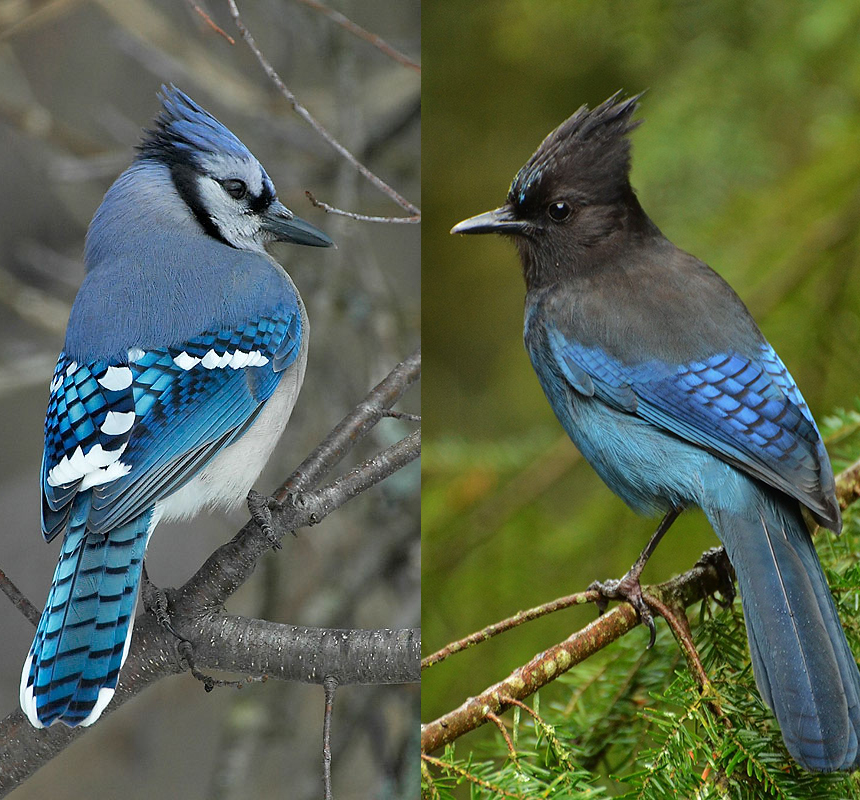About the Steller’s Jay
The gregarious and noisy Steller’s Jay traditionally has been the only crested jay found west of the Rocky Mountains, although in recent decades, its close relative the Blue Jay has made some inroads there. This robust species is also sometimes called long-crested jay, mountain jay, and pine jay, the latter two nicknames a nod to its preferred habitat of high-elevation coniferous forests.

A familiar sight at western campgrounds and picnic areas, this jay has subtly beautiful plumage of sooty black and rich blue shades that helps it blend into its shaded forest surroundings. Its wings and tail are blue barred with black, and it has a distinctive tall and shaggy black crest. Males and females look alike.
Although it’s “stellar” in so many ways, this songbird has a name that’s spelled differently.

Honoring a Stellar Naturalist
Although this handsome jay is a “stellar” sight, its species name stelleri actually honors a German naturalist and explorer, George W. Steller. Steller explored the Pacific Coast as a member of Vitus Bering’s Arctic expedition of 1741, and is considered a trailblazer of Alaskan natural history. Steller collected and described this jay on a brief foray onto an Alaskan island.
During the same voyage, Steller described other animals that now bear his name. One of these, the Steller’s Sea Cow, is now extinct; others, including the Steller’s Eider (a sea duck related to the King Eider), Steller’s Sea-Eagle, and Steller’s Sea Lion, are in decline.

Songs and Sounds
Like other crows and jays, including the Pinyon Jay and Common Raven, the Steller’s Jay is a highly vocal species equipped with a variety of loud calls. Although not quite as proficient a mimic as the Northern Mockingbird, the Steller’s Jay is still an excellent imitator of other birds and animals, and even mechanical sounds such as those made by phones, sprinklers, and squeaky doors.